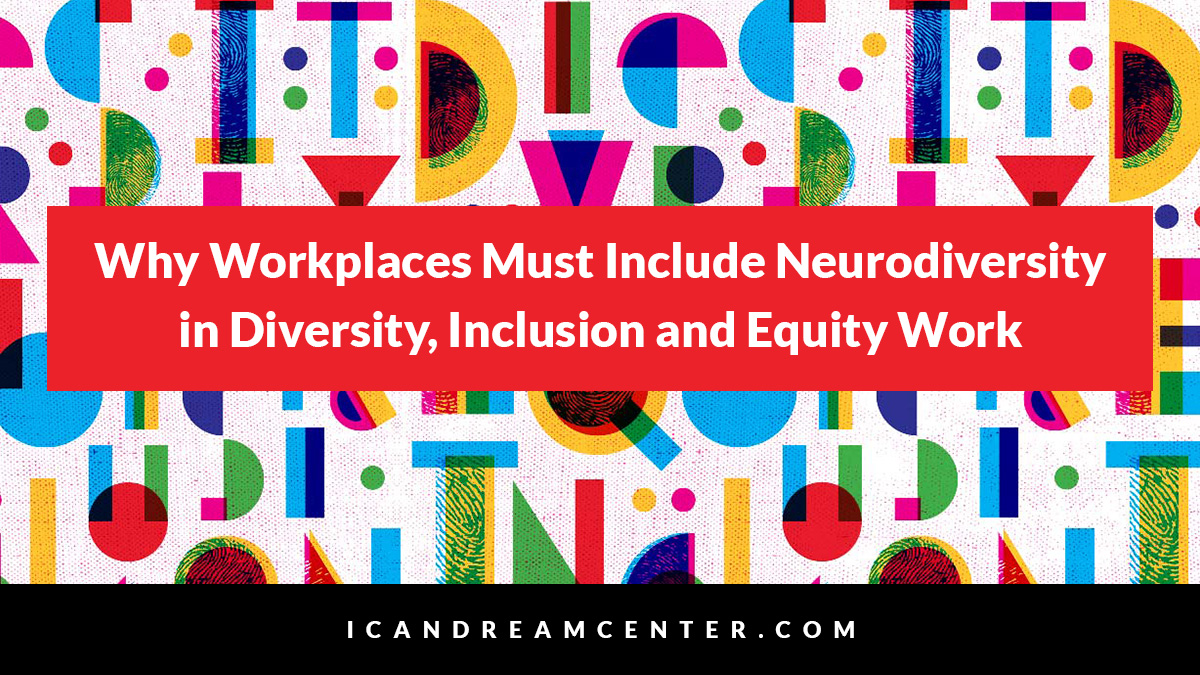
Why Workplaces Must Include Neurodiversity in Diversity, Inclusion and Equity Work
In the workplace, conversation matters. So not having certain conversation, or leaving important components off the table, especially when it comes to inclusion, has consequences for employees.
More than ever, companies are working to improve their diversity, equity, and inclusion (DEI) programs. This a great thing for the workforce and for society. But it has been noted that people with disabilities have not been included in these critical diversity conversations.
According to Return on Disability Group, although 90% of companies claim to prioritize diversity, only 4% consider disability in those initiatives. If these companies are truly looking to embrace diversity and break down bias, people with disabilities need to be taken into consideration.
To foster inclusiveness at work, companies simply must understand and talk about the one in five people that are navigating life with a learning or thinking difference, otherwise known as neurodiversity. If you’ve never heard of neurodiversity, you are not alone.
INVISIBLE DISABILTIES
Neurodivergence is a term for when someone’s brain processes, learns, and/or behaves differently from what is considered “typical.” Neurodivergence is a lifelong, brain-based set of behaviors that can affect a person’s reading, writing, math, organization, and focus. Neurodiversity is a difference from what is thought about as the norm—an invisible disability, if you will. These differences can be anything from ADHD, dyslexia, autism spectrum disorder, and more.
These differences affect many. One in every five people in the U.S. are neurodivergent thinkers. That means you are likely working with someone with neurodiversity, whether you’re aware of it or not.
While the numbers are staggering, the data around this lack of awareness is even more concerning. Data from the National Center for Learning Disabilities shows that approximately 51% of people think that neurodiversity is the result of laziness, and many don’t believe they even exist. Another misperception around neurodiversity is that they can be fixed—whether it be through medication or additional educational support or by children growing out of it. In fact, close to half of all parents in the U.S. (48%) incorrectly believe that kids grow out of neurodiversity.
This lack of awareness has profound ramifications for our society. School dropout rates are higher: those with neurodivergence drop out of high school at three times the rate of their neurotypical classmates. Lower wages, higher unemployment rates, homelessness, and jail are all increased possibilities when a person with learning and thinking differences isn’t set up to thrive.
In fact, without the necessary support, unemployment is two to three times more likely, and twice as many end up in poverty. This impacts more than just the individuals and their families—it comes at a cost of $500 billion to our society.
Awareness, understanding, and conversations around neurodiversity, even within the context of disabilities, can move the needle for these 70 million people who live with them. Better recognition can lead to better work and learning spaces, and environments where all can thrive.
Stay tuned to the blog next week for what companies can do to not just welcome neurodiversity or people with disabilities at work, but to how they create accessible conditions, support, empower, and engage their employees with neurodiversity and disabilities.
